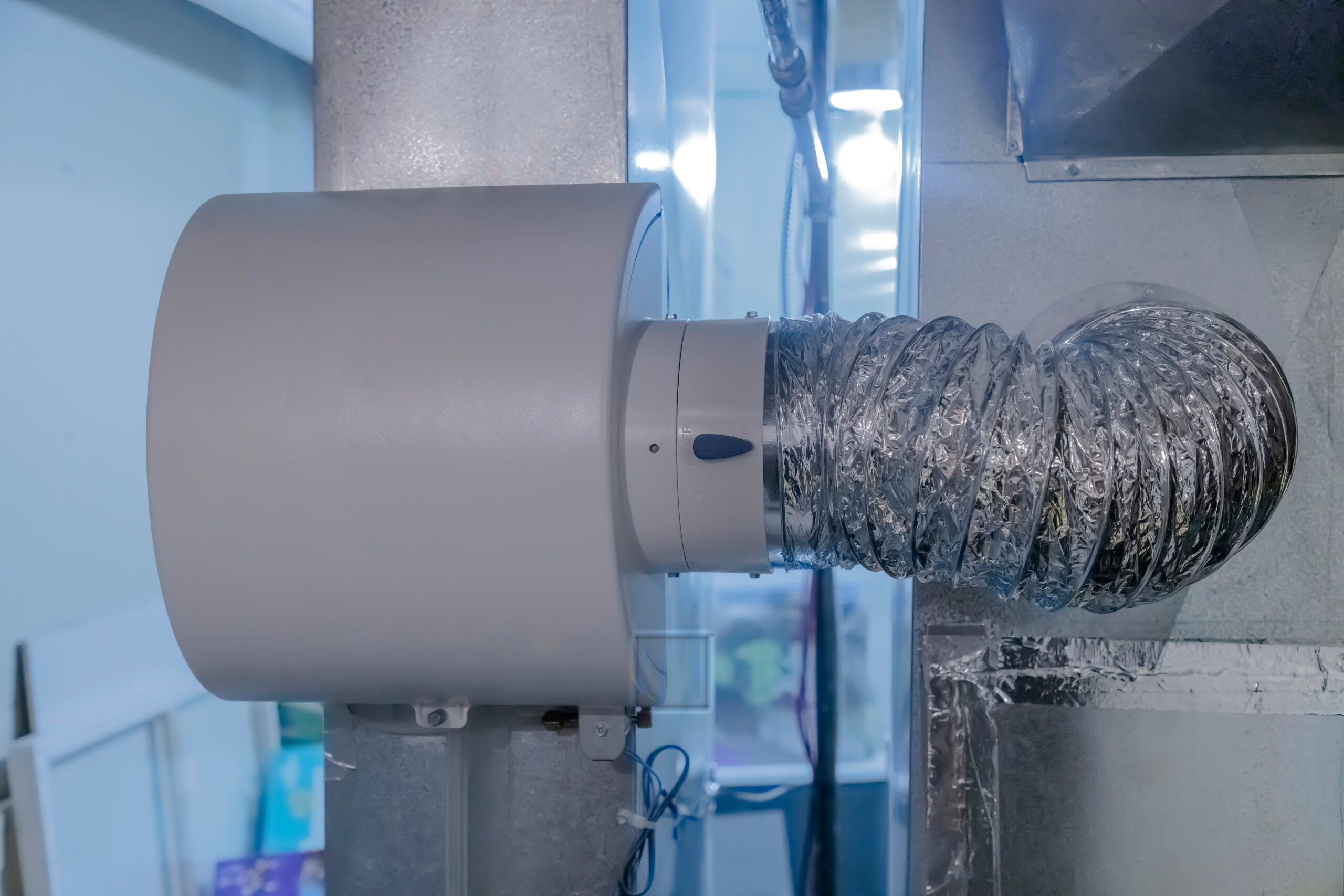
We’re familiar with the images of factories with billowing smokestacks and smog hovering over traffic-jammed cities. But what about indoor air pollution? According to studies conducted by the Environmental Protection Agency (EPA), indoor air can have levels of pollutants between five and 100 times more than outdoor air.
These high levels are of great concern since most of us spend about 90% of our time inside. The very young and the elderly often spend even more time indoors, and they are the very ones who are the most vulnerable to health problems caused by indoor air pollutants.
Unfortunately, concentrations of air pollutants indoors have increased due to the use of synthetics in everyday household items, such as materials used in buildings and furniture, cleaners, personal care items, and more. Homes and other buildings that are constructed to be airtight and energy efficient have exacerbated the problem. It’s important to be aware of indoor air pollutants — what they are, how they affect your health, and how to increase your indoor air quality.
What Indoor Air Pollutants Are
Air pollutants consist of gases and unpurified matter and infuse the air with certain materials around the home. Moisture, heat, and poor ventilation affect the concentrations of these pollutants indoors. Exposure to high concentrations of air pollutants indoors poses a significant health risk for many people.
Although some of the most dangerous pollutants, such as lead and asbestos, are less common today, the existing ones still pose a threat to our health. Here is a list of the most common indoor air pollutants and their sources.
Biological Agents
Viruses, bacteria, mold, pollen, pet dander, dust, and insects are living organisms. They thrive in a space with excess moisture and where there is a collection of dust and debris. High concentrations of these contaminants can aggravate allergies and spread diseases. Keeping the relative humidity of your home between 30%-50% helps minimize the growth of these contaminants.
Radon
Radon is rarer than most indoor pollutants but still poses a threat wherever granite is found. The radioactive gas is produced by the decay of uranium found in the soil. It seeps up from the underground and enters your home wherever it can. Odorless and colorless, it’s the leading cause of lung cancer in nonsmokers. Concentration levels can only be determined by testing.
Carbon Monoxide
The odorless gas known as carbon monoxide is a by-product of fossil fuels and gas-powered equipment. Keeping furnaces and other sources of heat in good operating condition is important to prevent it. Lower levels of carbon monoxide exposure will make you feel lethargic. Higher levels may result in headaches, dizziness, confusion, chest pain, and nausea. At high concentrations, it can even be fatal.
Tobacco Smoke
Tobacco smoke has around 70 chemical compounds that have been determined to cause cancer by the American Cancer Society. They include arsenic, carbon monoxide, formaldehyde, and benzene. You can prevent this pollutant from entering your home if you don’t allow cigarette, cigar, or pipe smoking indoors.
Formaldehyde
Formaldehyde is a flammable gas that you can smell. It’s used in manufacturing building materials, pesticides, paints, varnishes, and as noted above in tobacco smoke. It’s more likely to occur in warm spaces with high humidity. Exposure to formaldehyde can irritate your skin, eyes, nose, and throat. High levels can cause certain cancers.
VOCs
VOCs or volatile organic compounds are released from organic chemicals commonly used in household products such as aerosol sprays, cleaners, air fresheners, and disinfectants. VOC exposure may cause headaches, respiratory problems, and damage to the central nervous system and internal organs. Some VOCs are thought to be cancer-causing carcinogens, particularly benzene in paint supplies and stored chemicals.
Nitrogen Dioxide
A byproduct of burning fossil fuels to heat our homes, nitrogen dioxide (NO2) reacts with other gases to form unpurified matter. It has been associated with cancer, kidney damage, autoimmune disorders, and problems with pregnancy and childbirth.
Improving Indoor Air Quality
Problems caused by brief exposure to indoor pollutants are usually resolved when the pollutants are removed. It’s the cumulative effect over longer periods that results in the development of conditions such as cancer, heart disease, and respiratory issues. Eliminating all pollutants in your home may be impossible. However, a few changes and strategies will help improve your indoor air quality and reduce the risk of health issues.
Keep a Clean Home
Keeping your home clean is important if you want to reduce pollutants like dust, animal dander, mold, and mildew. Vacuum your carpets and rugs a minimum of two times per week. It’s best to use a vacuum cleaner with a HEPA filter. You can reduce these allergens even further by replacing carpets with hard-surfaced flooring.
Launder your bedding and drapes regularly, especially if you have pets. Wash them in water that’s about 130 degrees Fahrenheit. It’s also helpful to use dust mite covers on pillows and mattresses. Since clutter traps dust, clear all clutter as soon as you can. Take cardboard boxes and paper items to your recycling center frequently.
Be Careful With Plants
Most people love having indoor plants, and some plants such as snake plants and peace lilies indeed help purify the air and release clean oxygen. The problem with plants is that watering them indoors can cause the growth and collection of harmful mold. Remove them if they trigger allergies for you or family members.
Let Fresh Air In
It’s not crazy to fling open a window for a few minutes occasionally even if it’s hot or cold outdoors. There’s nothing like fresh air to eliminate indoor air pollutants. For an even greater effect, add a fan in the kitchen to chase away cooking fumes.
Keep Filters Changed
If your home uses a forced-air heating system, it’s important to change the filters often. Electrostatic filters are best at eliminating dust and airborne pollutants. Keep trapped dust out of your ducts by having them regularly cleaned.
Invest in an Air Purifier or a Dehumidifier
If members of your household are bothered by indoor air pollutants and these ways to control the problem aren’t working, an air purifier is a good investment. This is especially true if you have pets that you don’t want to give up. Strategically placed around the house, air purifiers, especially ionic ones, can trap irritants that trigger allergic symptoms.
In damp areas such as basements, a dehumidifier can help stop the growth of mold. Dehumidifiers work by intaking air and reducing the temperature below the dew point. The humidity is trapped and clean air is released into circulation. Make sure your bathrooms are well-ventilated to keep down mold. If you see mold on walls, showers, or fixtures, be sure to scrub it off.
Use a UV Sanitizer
A UV sanitizer uses ultraviolet light to kill or inactivate harmful microorganisms. It damages their genetic material and inhibits their vital functions.
At Rosenberg Plumbing & Air in San Antonio, our trusted industry experts can help you improve your indoor air quality. We can repair your ductwork and recommend ways to sanitize your air including adding a humidifier, air purifier, and the use of a UV sanitizer. We also install, maintain, and repair heating and air conditioning systems and provide residential plumbing services. Contact us today to schedule an appointment.
Tags: Air Purifiers, Dehumidifier
